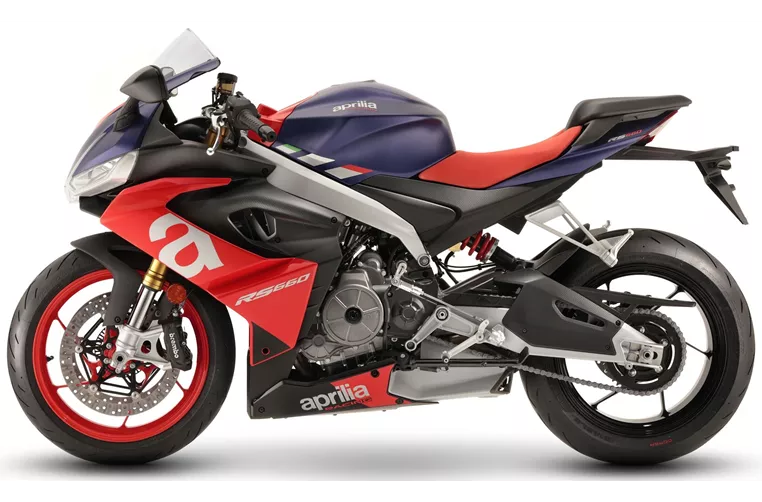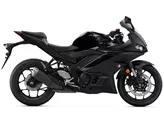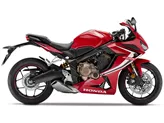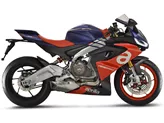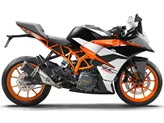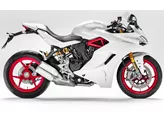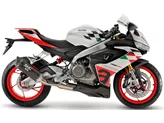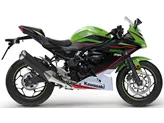Aprilia RS 660 2021 vs. Kawasaki Ninja 400 2018
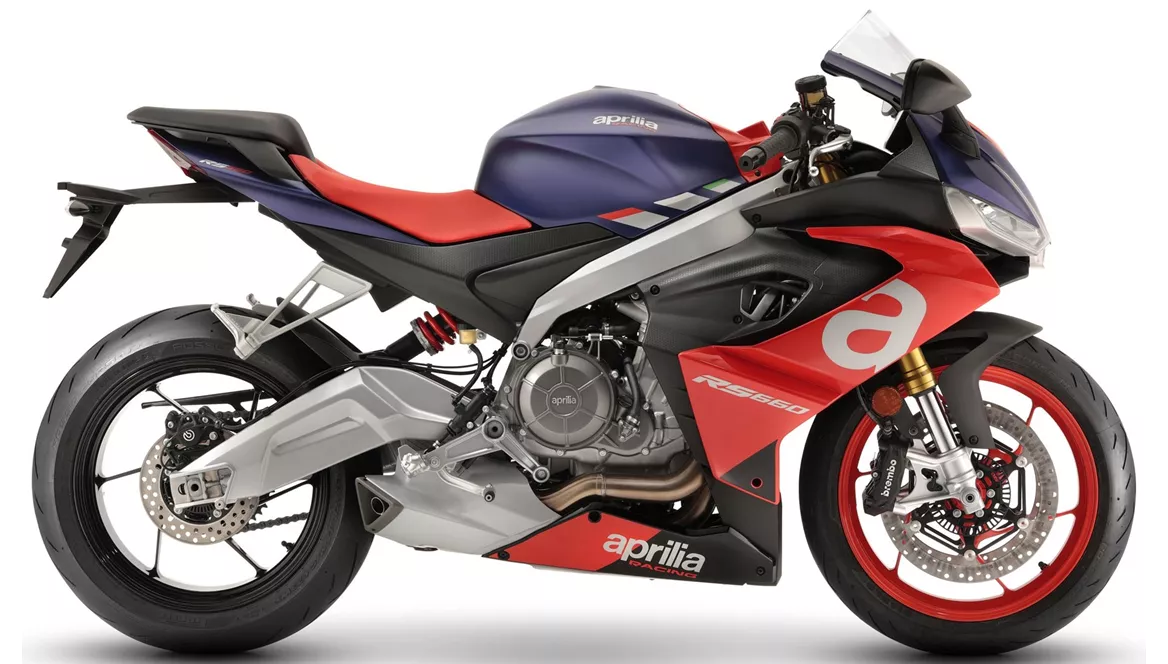
Aprilia RS 660 2021

Kawasaki Ninja 400 2018
Overview - Aprilia RS 660 2021 vs Kawasaki Ninja 400 2018
The Aprilia RS 660 2021 and the Kawasaki Ninja 400 2018 are both supersport motorcycles that cater to riders looking for a thrilling and sporty riding experience. While they share some similarities in terms of their displacement, number of cylinders, and suspension setup, there are notable differences between the two models.
Starting with the engines, the Aprilia RS 660 2021 boasts a more powerful engine with 100 HP compared to the Kawasaki Ninja 400 2018's 45 HP. The Aprilia also has a higher torque of 67 Nm compared to the Ninja's 38 Nm. This difference in power is reflected in the Aprilia's higher compression ratio of 13.5, indicating its ability to generate more power from each combustion cycle.
In terms of chassis, the Aprilia RS 660 2021 features an aluminum frame, while the Kawasaki Ninja 400 2018 has a steel frame. The aluminum frame on the Aprilia provides a lighter and more rigid structure, contributing to its overall low weight and sporty handling. On the other hand, the steel frame on the Kawasaki Ninja 400 offers a balance between rigidity and flexibility, providing a comfortable and confidence-enhancing riding experience.
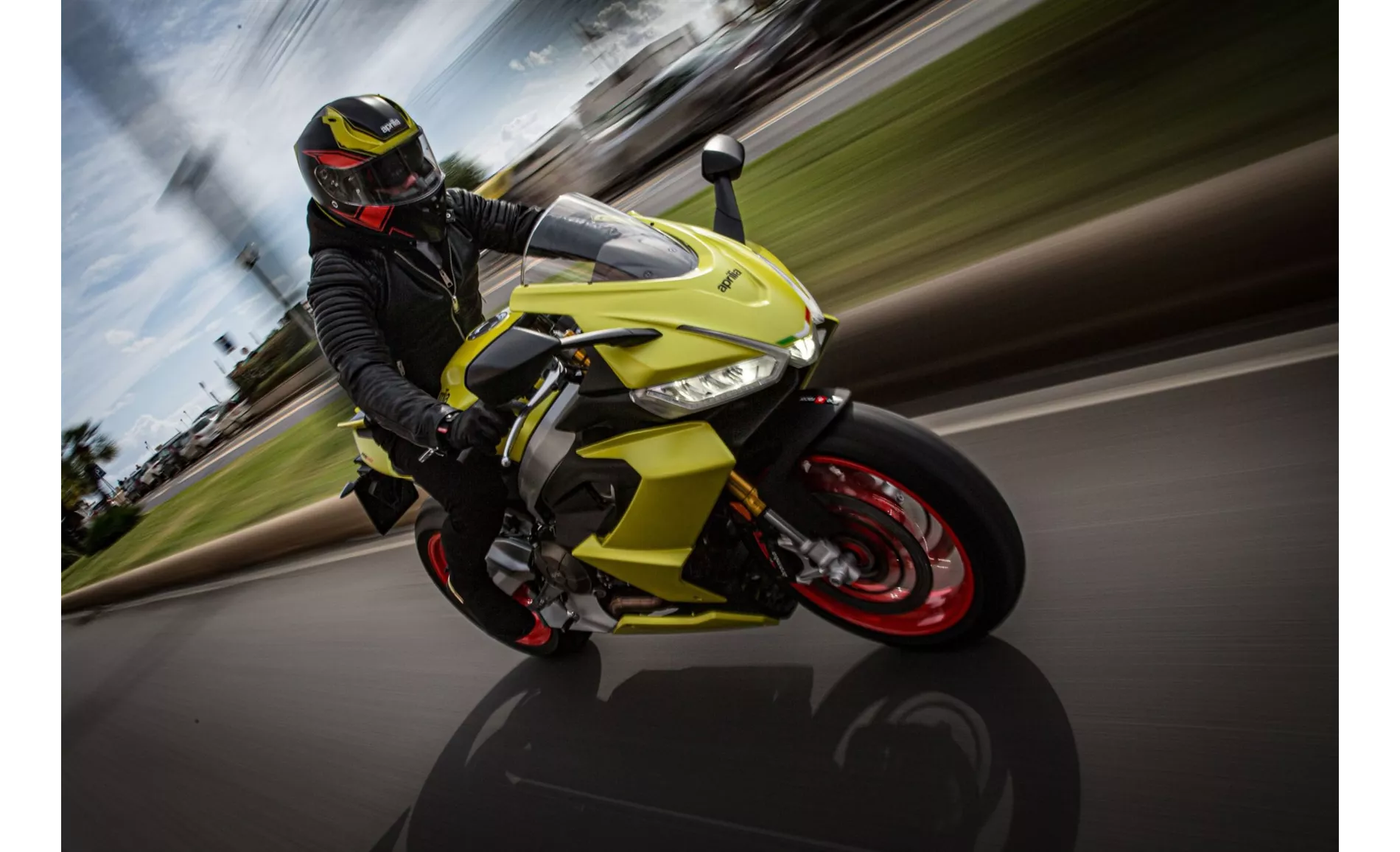
Aprilia RS 660 2021
When it comes to suspension, both motorcycles feature a swing arm and a monoshock rear suspension. However, the Aprilia RS 660 2021 comes with an upside-down telescopic fork front suspension with a larger diameter of 41 mm, compared to the Kawasaki Ninja 400 2018's telescopic fork with a 41 mm diameter. This difference in suspension setup suggests that the Aprilia offers better handling and stability during aggressive riding.
In terms of braking systems, the Aprilia RS 660 2021 is equipped with double disk brakes with a diameter of 320 mm and radial technology, while the Kawasaki Ninja 400 2018 has a single disk brake with a diameter of 310 mm and petal technology. The larger diameter and radial technology on the Aprilia's brakes provide better stopping power and heat dissipation, making it more suitable for high-performance riding.
Both motorcycles come with advanced rider assistance systems, with the Aprilia RS 660 2021 offering a more extensive electronics package. It includes ABS, riding modes, launch control, ride by wire, quickshifter, traction control, and anti-wheelie. The Kawasaki Ninja 400 2018, on the other hand, only features ABS. This difference in electronics highlights the Aprilia's focus on providing a more technologically advanced and customizable riding experience.

Kawasaki Ninja 400 2018
In terms of dimensions and weights, both motorcycles have similar wheelbase lengths of 1370 mm. However, the Aprilia RS 660 2021 has a slightly higher seat height of 820 mm compared to the Kawasaki Ninja 400 2018's 785 mm. The Aprilia also has a higher kerb weight of 183 kg, while the Kawasaki Ninja 400 weighs 168 kg. These differences in weight and seat height can affect the overall handling and maneuverability of the motorcycles.
In terms of weaknesses, the Aprilia RS 660 2021 has a poorly readable rev counter, which can be a drawback for riders who rely heavily on this instrument. On the other hand, the Kawasaki Ninja 400 2018 has brake and clutch levers that are not adjustable, which may limit customization options for some riders. Additionally, the Ninja 400's original windshield can create loud wind noise for riders over 180 cm tall, potentially affecting the overall riding experience.
In conclusion, the Aprilia RS 660 2021 and the Kawasaki Ninja 400 2018 are both impressive supersport motorcycles with their own unique strengths and weaknesses. The Aprilia offers a more powerful engine, extensive electronics package, sporty chassis, and a sporty look. On the other hand, the Kawasaki Ninja 400 provides a chassis suitable for sporty use, low weight for effortless handling, a smooth engine response, a relaxed seating position, and LED headlights. Ultimately, the choice between the two models will depend on the rider's preferences and priorities in terms of performance, handling, and features.
Technical Specifications Aprilia RS 660 2021 compared to Kawasaki Ninja 400 2018
Pros and Cons in comparison
Pros and Cons in comparison
Aprilia RS 660 2021
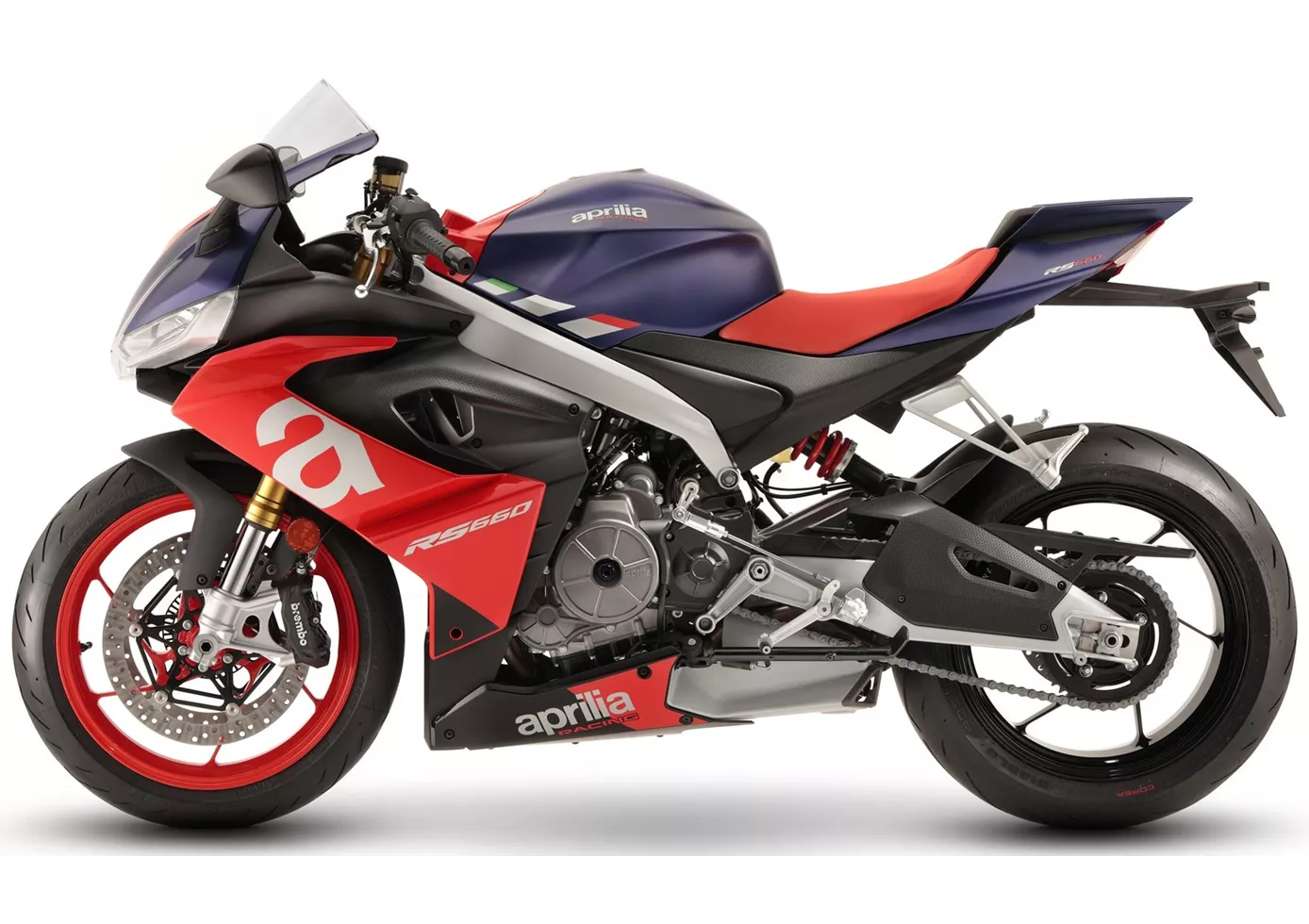
In 2021, the Aprilia RS 660 can be seen as the last true 600cc supersport, because with its sporty seating position and high-quality chassis components, it hits the sweet spot between suitability for everyday use and trackday potential. Thanks to the comprehensive electronics package, nothing is left to be desired on the road or on the track - and you can't complain about the powerful two-cylinder anyway. A great package for all those for whom 200+ hp superbikes are too much for everyday use.
Kawasaki Ninja 400 2018

In summary, the Ninja 400 could be described as the perfect entry into the supersport world. You can't get more power with A2, the looks suggest much more power, the vehicle is playful to ride, is forgiving in every respect and still allows a really sporty riding style. Those who had legitimate concerns about the lack of power on the various 250 cubic machines now have no more excuses. Ninja 400, it's good to have you!
Price Comparison Avarage Market Price Aprilia RS 660 vs Kawasaki Ninja 400
There are a few key differences between a Aprilia RS 660 2021 and a Kawasaki Ninja 400 2018. In terms of price, the actual average price of a Aprilia RS 660 2021 is about 70% higher. Compared to Kawasaki Ninja 400 2018 there are more Aprilia RS 660 2021 bikes available on the 1000PS.de Marketplace, specifically 16 compared to 10. It takes less time to sell a Aprilia RS 660 with 101 days compared to 105 days for a Kawasaki Ninja 400. Since model year 2020 1000PS.de editors have written 14 reviews for the Aprilia RS 660 and 9 reviews for the Kawasaki Ninja 400 since model year 2018. The first review for the Aprilia RS 660 was published on 05/11/2019 and now has more than 52,500 views. This compares to more than 44,300 views for the first review on Kawasaki Ninja 400 published on 22/11/2017.
